Phyllo Wrapped Chili Grouper with Almond Beurre Noisette
I'm not a strict locovore, but I do try to keep things local when I have a choice. It makes sense for a lot of reasons: sustainability, shipping costs (monetary and carbon), supporting local economies in general, and our local farmers and fishermen in particular. It's a good thing Christey and I love seafood, citrus, and chilies -- items very common to Florida. I don't know what we'd do if we lived in Needles, Arizona. Eat a lot of javelina, I suppose. I don't go overboard with locovarianism, though. I think regions and cultures from around the country or around the world can teach us a lot through cuisine. If "you are what you eat", then sampling other cultures, especially through cuisine, can only help bring other people and cultures just that much closer. Technology has given us foodies a way to sample the entire world in ways that could not have been possible even when my parents were my age.
I'm self-taught when it comes to cooking. I've studied primarily French techniques (not out of any superiority of the French when it comes to cuisine, but Escoffier and his followers have made the art of cuisine approachable, teachable, and marketable). As a foodie, though, I will happily ingest the world. I've noticed within the last year or two that if I have a personal cooking style, I like to take a technique, ingredient, or recipe from one part of the world, and fusion it with another (or three or four). In one sense, it's surprising how often this actually works. In another sense, food and cuisine were created by people, and we're all just people, no matter what our origin.
Last night, I fused a lot of areas into one great meal. I took local grouper, covered it in sauteed criminis and shallots, tossed on some green chilis and red jalapeños, and some sharp cheddar. I covered in phyllo, baked, then served over baby spinach with a brown butter noisette, with toasted almonds.
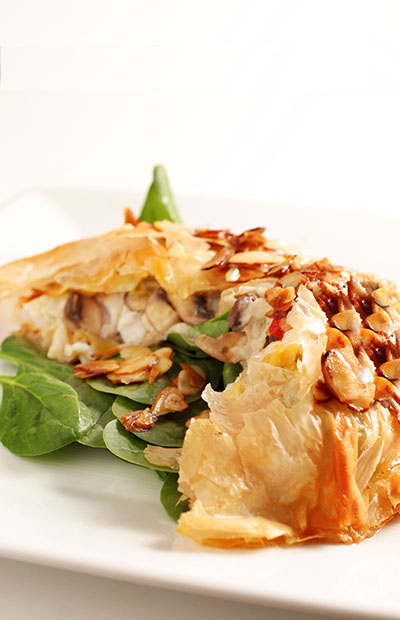
En papillote is a French method of cooking a protein (like fish), in parchment paper. The Greeks do something similar with phyllo (perhaps with some feta and olives and grape leaves), essentially making the paper happily edible. When it comes to locovarianism, grouper might as well be the state fish. Sometimes with grouper, I like a tex-mex blend of cheddar (oddly, a northern cheese), with green chilies and red jalapeños. Add a French-refined lemon/brown-butter sauce, and there are almost 7000 miles (11000 km) of distance between the cuisines and ingredients that inspired this dish. A third of the world on a single fork.
I cooked the filling first. I sliced a half pound of criminis and a shallot, then sautéed the shallots in a hot pan with some olive oil until they browned delicately. I added the mushrooms and browned the outsides a bit, then added some kosher salt and a shot of white wine (a pinot grigio) to cook down until they smelled nice:

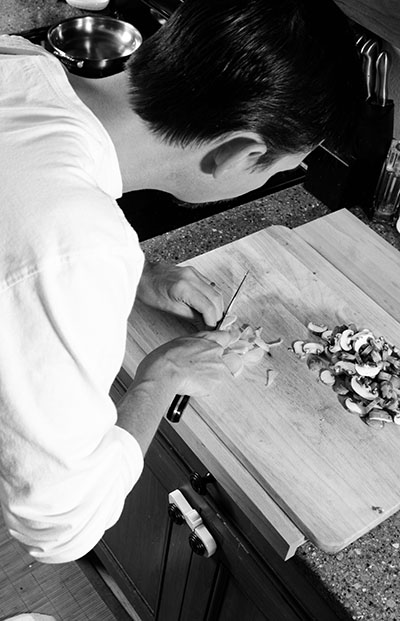
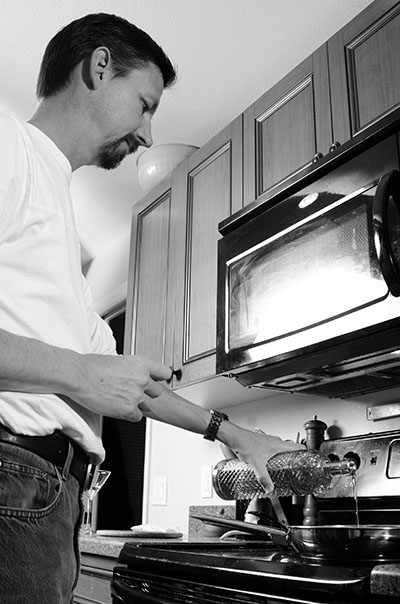



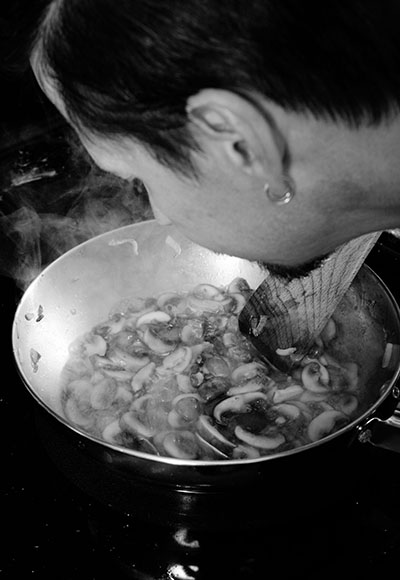

Next, I moved on to the chilis. I took a can of green chilies (usually called California chilies when fresh) and separated out the skins and stems which inevitably make their way into the can. I prefer to seed and skin whole canned (or fresh) chilies, but I haven't been able to find whole chilies lately, just the pre-diced. I also took some roasted red jalapeños and seeded and diced them.

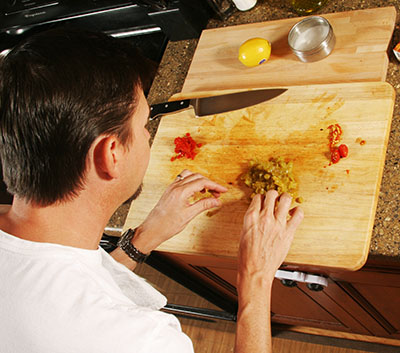
I cleaned the grouper next, taking off the bits of skin left behind and making sure there were no pin-bones still in the flesh.


I unwrapped some thawed phyllo, and covered it with a kitchen towel to keep it from drying out. I took a sheet at a time, brushed with melted butter, then layered with another sheet of phyllo until I had five sheets of buttered layers.



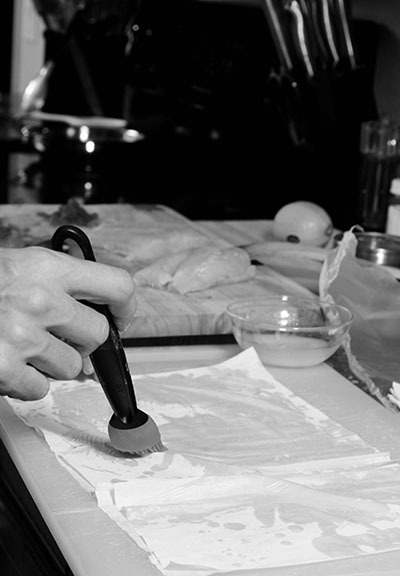
Once the five layers were buttered, I added half the grouper, then covered with some mushroom/shallot mixture, some green chilies, some red jalapeños, then some shredded sharp cheddar. I folded the rest of the phyllo over the top and smoothed the edges to seal the grouper into the phyllo. I chopped off the corners, then brushed the outside with more melted butter. I repeated with the other grouper fillet, then tossed both into a preheated 400 degree oven for about 20 minutes.
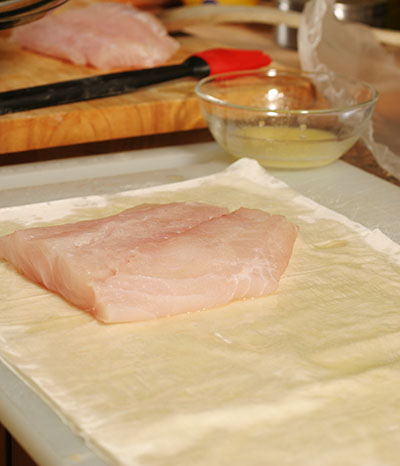
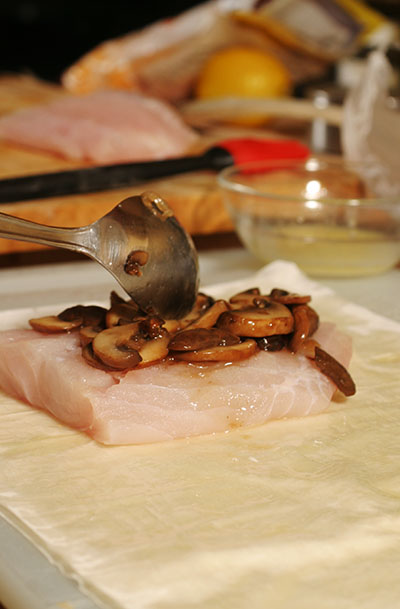
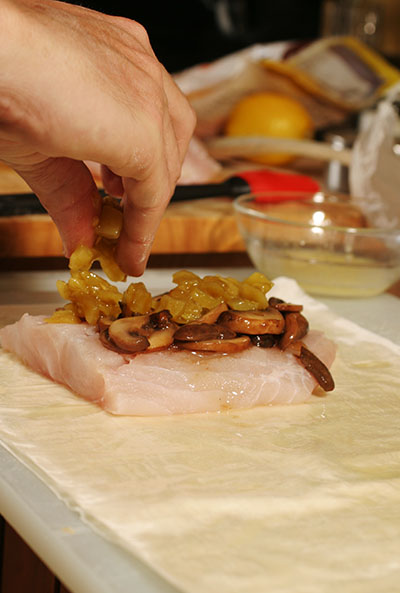


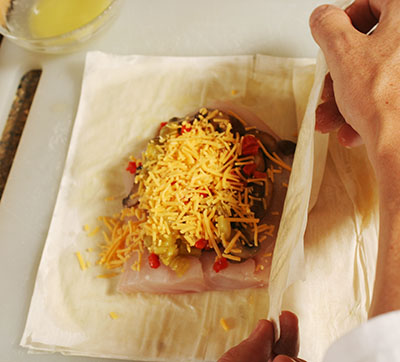
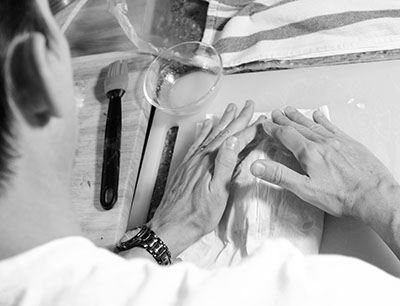


For the topping and sauce, I melted a little bit of butter (about 1-2 teaspoons) in a pan and toasted some sliced almonds until golden, then set aside. I cleaned out the pan, then added 2-3 tablespoons of butter and heated until the butter melted, then sizzled the water away. The butter solids toasted lightly into a golden color, which is what the French call a beurre noisette -- noisette is the French word for hazelnut, and the smell is pretty close to that sweet, nutty odor. There's a similar process and flavor when making a ghee -- a clarified butter from India where the solids have first been toasted golden. At the end, a lemon is squeezed into the sauce to provide some acid and punch, and the almonds are added back in to warm.
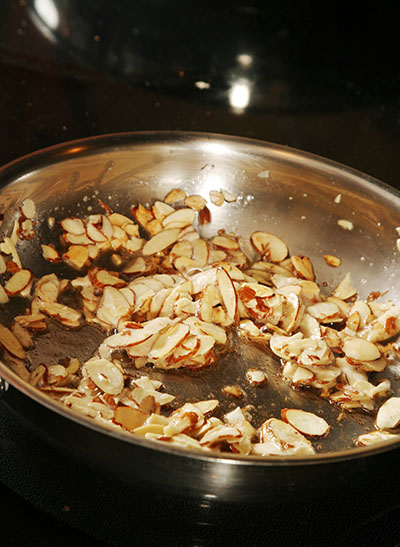
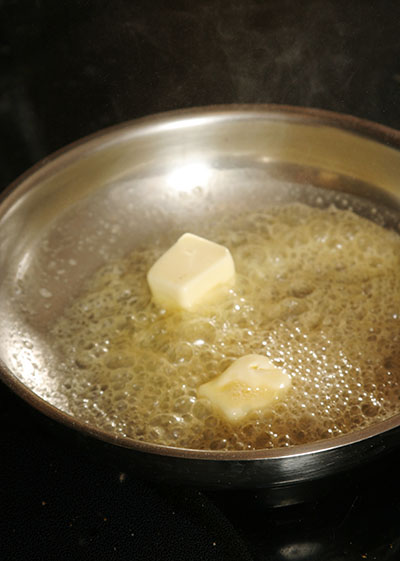
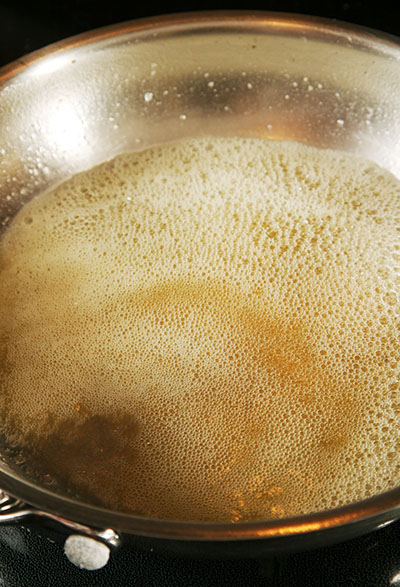


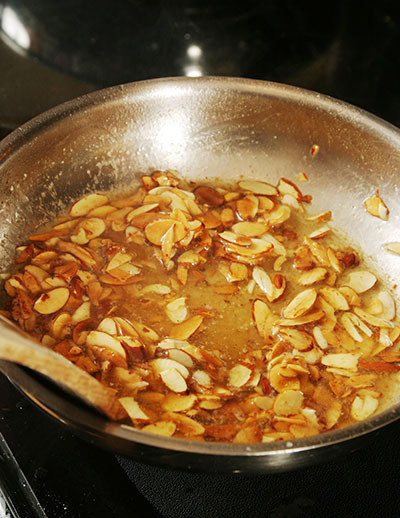
For plating, the phyllo grouper is cut in half, served over some baby spinach, then covered with the beurre noisette almondine.

Deconstruction: This was better than I had hoped. I was worried that I wouldn't be able to peek on the grouper -- test if it was done with a fork or knife, when it was encased in flaky phyllo. The dozens of Internet sources I looked at seemed to hint that the phyllo wouldn't fully brown unless the fish had cooked inside(steam generation, I would suppose), and the browness would be a good barometer. This turned out to be the case in my oven, and I was very happy with the flaky, tender grouper within the crunchy phyllo shell. The tangy and nutty broken butter and almond sauce added more enhancement and texture. The almonds in particular, from their toasted texture and browned flavor, especially with the butter base, contributed just as much to this dish as the assertive chilies did. The cheese (helped by the chilies) provided an earthy contrast to the mild fish, and even the spinach (originally added for some color and vegginess to this almost monochromatic meal) balanced the acid and crunch pretty well. I'd make this again in a heartbeat.



